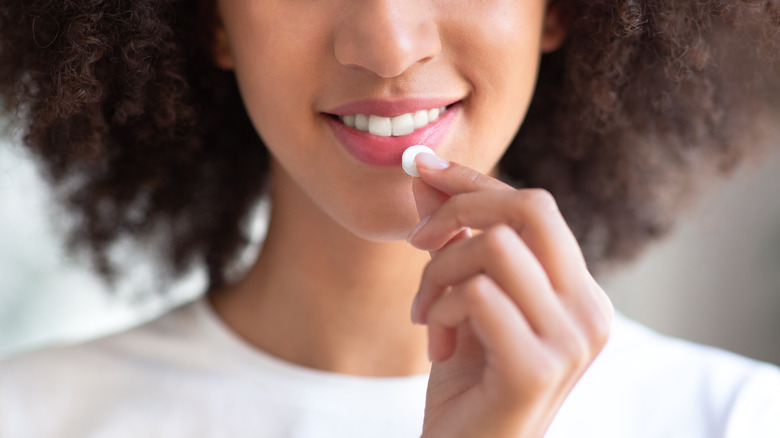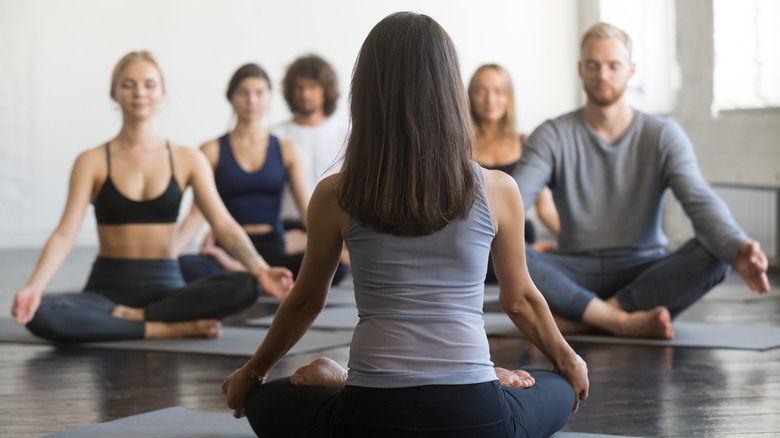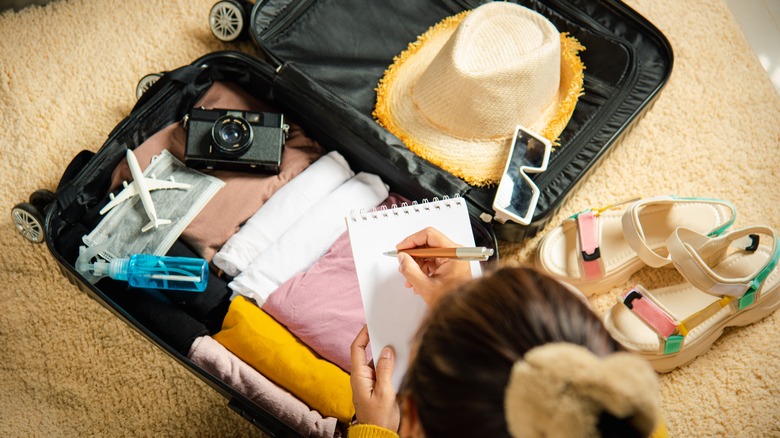5 Healthy Ways To Combat Seasonal Depression
Fall brings upon us a welcomed change from sweltering heat to sweater weather and pumpkin-spiced everything. As much as we love the holiday season, fall also marks the beginning of shorter days — less sunshine and longer nights can make some people feel more down than in the sunnier days, a phenomenon known as seasonal depression
According to Mental Health America, seasonal depression — or Seasonal Affective Disorder (SAD) — is a type of depression caused by less sunlight in the fall and winter, which lowers the levels of serotonin, a mood-impacting neurotransmitter. It simultaneously increases levels of melatonin, a hormone that regulates your sleep. Common symptoms include anxiety, mood changes, sleep problems, tiredness, and lack of interest in social activities.
SAD usually starts in late fall or early winter and can last four to five months, depending on your geography, as people living away from the equator experience it more, per the National Institute of Mental Health.
Deborah Pierce, M.D., clinical associate professor of family medicine at the University of Rochester School of Medicine and Dentistry in Rochester, New York, told Everyday Health, "It is important to treat SAD, because all forms of depression limit people's ability to live their lives to the fullest, to enjoy their families, and to function well at work."
If you know you are likely to get the winter blues, there are healthy ways you can prepare your mind and body to prevent or alleviate the impacts of seasonal depression.
Use light therapy
According to the American Family Physician, up to 6% of people experience seasonal affective disorder (SAD), while 10 to 20% of the population can be mildly impacted. Women are more likely to be feel the symptoms of SAD than men, while children and teenagers are less likely to experience it. Mental Health America further notes that sunlight impacts the production of the hormones that can determine your mood and circadian rhythms and are visible in brain scans. However, not everyone has the option to relocate down south for more sunshine, so you can invest in a sun lamp or light box.
Mayo Clinic notes that light therapy can provide bright illumination that mimics the sunlight, helping dampen SAD symptoms. It works by tricking the brain to think you are in natural daylight, balancing your hormones as a result. Check with your physician and light therapy directions to see how to use it and for how long, as using too much too soon could worsen cases if you have been diagnosed with bipolar disorder. It's important to note that light boxes aren't Food and Drug Administration (FDA) regulated, so check with your physician before choosing one.
People have been using light therapy since the 1980s, and it's generally recommended that you sit by the light for 30 to 45 minutes when you wake up in the morning, per the National Institute of Mental Health. However, this isn't recommended for those with eye diseases or who are taking medication that can increase eye sensitivity.
Take antidepressants from fall to spring
If you're struggling with depression and anxiety, less sunlight and darker days could worsen those symptoms. In such cases, speaking with your physician and exploring the options of antidepressants can help lessen seasonal depression symptoms.
Ani Kalayjian, an adjunct professor of psychology at Columbia University, recommends speaking with your medical provider early. Start taking antidepressants when you experience symptoms of seasonal depression, Kalayjian asserts – don't wait for it to impact various aspects of your life (via Everyday Health).
Royal College of Psychiatrists further recommends choosing antidepressants that don't have side effects of lethargy and sleepiness and instead support the use of selective serotonin reuptake inhibitors (SSRI) antidepressants from fall till spring, which is typically how long it lasts. SSRIs help improve levels of serotonin in your brain — some common examples are Escitalopram (Lexapro), Fluoxetine (Prozac), and Sertraline (Zoloft), per Mayo Clinic.
It's important to keep in mind that antidepressants can have side effects — if they are severe, consult your physician immediately.
Engage in social activities during the fall
Most people are out and about in the warmer months, but tend to hibernate in the winter, which could make seasonal affective disorder (SAD) worse. If you're someone who feels more hopeless during the colder time of the year, it's wise to make plans early in order to ease the transition into winter.
Psychologist Kim Burgess, Ph.D., founder of the Pediatric Psychology Center in Rockville, Maryland, told Everyday Health, "It's better to set yourself up for the winter season by starting in the fall season — doing enjoyable activities, initiating friend group chats and outings, choosing fun hobbies, and engaging in clubs or community service." Dr. Burgess advises people to join social activities or clubs that help improve their mood and physical health. Perhaps consider joining an indoor sports team or knitting group where you have to socialize with other people — this will help keep your emotional health in check.
"Creating a new social obligation can motivate us. Anything that makes you take part in activities that allow you to be engaged outside of your self-awareness is useful for people who are living with SAD," psychologist Scott Bea, PsyD, told Cleveland Health Clinic.
If you're looking for options that are a little easier than joining a team or club, consider organizing weekly dinners or walks with friends — connecting with others will boost your mental well-being. Plus, you might discover a new hobby or passion you would have never learned about earlier.
Stay physically active
It's easier to go for a run or a hike when the weather is pleasant — once the colder month hits, most of us just want to stay indoors. But as we've presented, such an activity (or lack thereof) could worsen seasonal affective disorder (SAD).
Working out is excellent for your body, but also benefits your mental health. According to the American Psychological Association (APA), exercise can help release happy hormones like serotonin and dopamine in the brain. Therefore, physically active people are less likely to experience anxiety, depression, and panic attacks.
Arlene Malinowski, Ph.D., recommends being more disciplined with your workout sessions in the colder, darker months for brain health (via Everyday Health). It might be helpful to get a friend to join the gym or workout class with you, as working out with someone else can help you stick to a program longer if you find it challenging to exercise alone.
Psychologist Scott Bea further told Cleveland Health Clinic, "Moving your body will compete with that tendency to be sluggish and can produce good brain chemistry." Depending on where you live and your interests, winter might be an excellent time to try hot yoga, or if you're a fan of skiing, there's no better time to spend more time outdoors.
Go on a vacation
If there's ever a time you deserve a vacation, it's during the winter months. While most of our moods aren't impacted negatively during the warmer months (when it's much easier to get out and about), winter can make it harder. Of course, not only could you make a quick getaway to somewhere warmer, but having a trip on the books will give you something to look forward to.
Dr. Ani Kalayjian, an adjunct professor of psychology at Columbia University, told Everyday Health of planning a winter trip, "The excitement that can lift your mood can start as you prepare for your vacation and linger for a few weeks after you return." Getting away for even a short time to a land with a bit more sunshine can help decrease the symptoms of seasonal depression. If you tend to get tired of the days getting too gloomy in the Northeast, it might not be a bad idea to take a mini break to sunny California for a few days. Even Dr. Arlene Malinowski admitted to seeing friends in warmer climates during this time.
Traveling can be exciting in general, especially if you need time off to recharge and get a little boost of vitamin D. Keeping the sunshine in mind, plan a little vacation to the southern parts of the country like Arizona or Florida where it will be warmer and brighter, per Places. Bye, winter blues.





